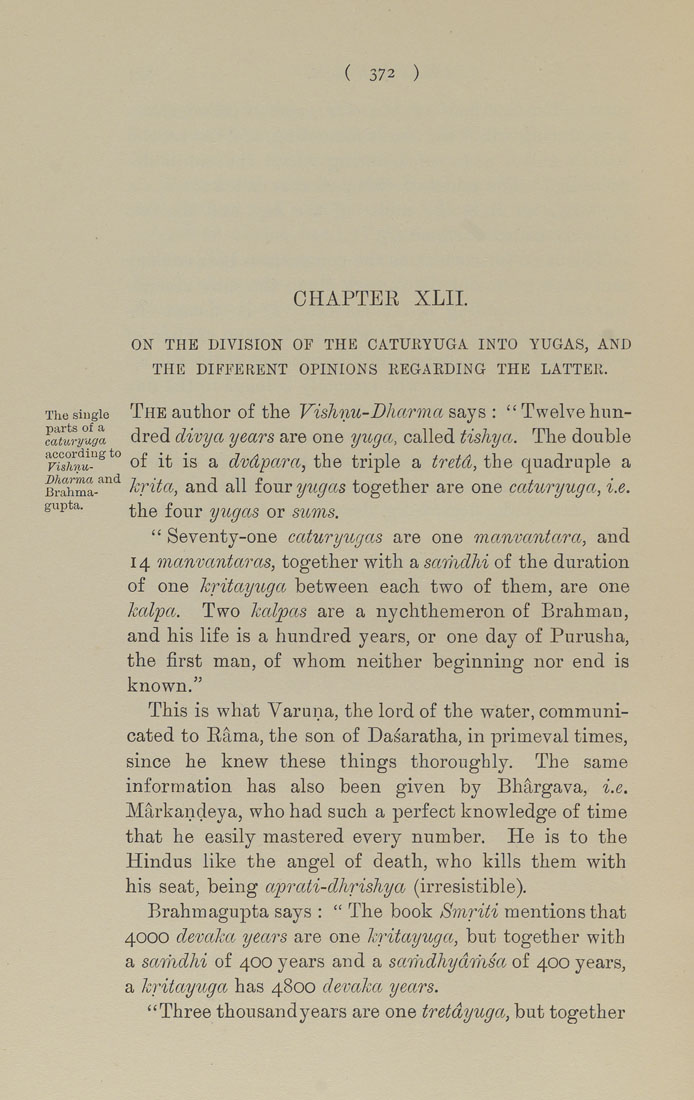Bīrūnī, Muḥammad ibn Aḥmad, Alberuni's India (v. 1)
(London : Kegan Paul, Trench, Trübner & Co., 1910.)
|
||
|
|
|
|
| Page 372 |

( 372 ) CHAPTEE XLIL ON THE DIVISION OF THE CATUEYUGA INTO YUGAS, AND THE DIFFERENT OPINIONS EEGAEDING THE LATTEE. The single TiiE author of tlic Vishnu-Dhctrmct says : " Twelve hun- Yaturyuga drcd divya years are one yugct, called tishya. The double ^vi^inu-^ ° of it is a dvdpara, the triple a tretd, the quadruple a Brahma-^"^ kritct, and all four yugas together are one ectturyuga, i.e. gupta. ^]^g four yugas or sums. " Seventy-one caturyugcts are one manvantara, and 14 manvantaras, together with a samdhi of the duration of one kritayuga between each two of them, are one kalpa. Two kalpas are a nychthemeron of Brahman, and his life is a hundred years, or one day of Purusha, the first man, of whom neither beginning nor end is known," This is what Varuna, the lord of the water, communi¬ cated to Eama, the son of Dasaratha, in primeval times, since he knew these things thoroughly. The same information has also been given by Bhargava, i.e. Markandeya, who had such a perfect knowledge of time that he easily mastered every number. He is to the Hindus like the angel of death, who kills them with his seat, being aprati-dhrishya (irresistible). Brahmagupta says : " The book Smriti mentions that 4000 devaka years are one kritayuga, but together with a samdhi of 400 years and a samdhydmsa of 400 years, a kritayuga has 4800 devaka years. "Three thousandyears are one tretdyuga, but together |
| Page 372 |







